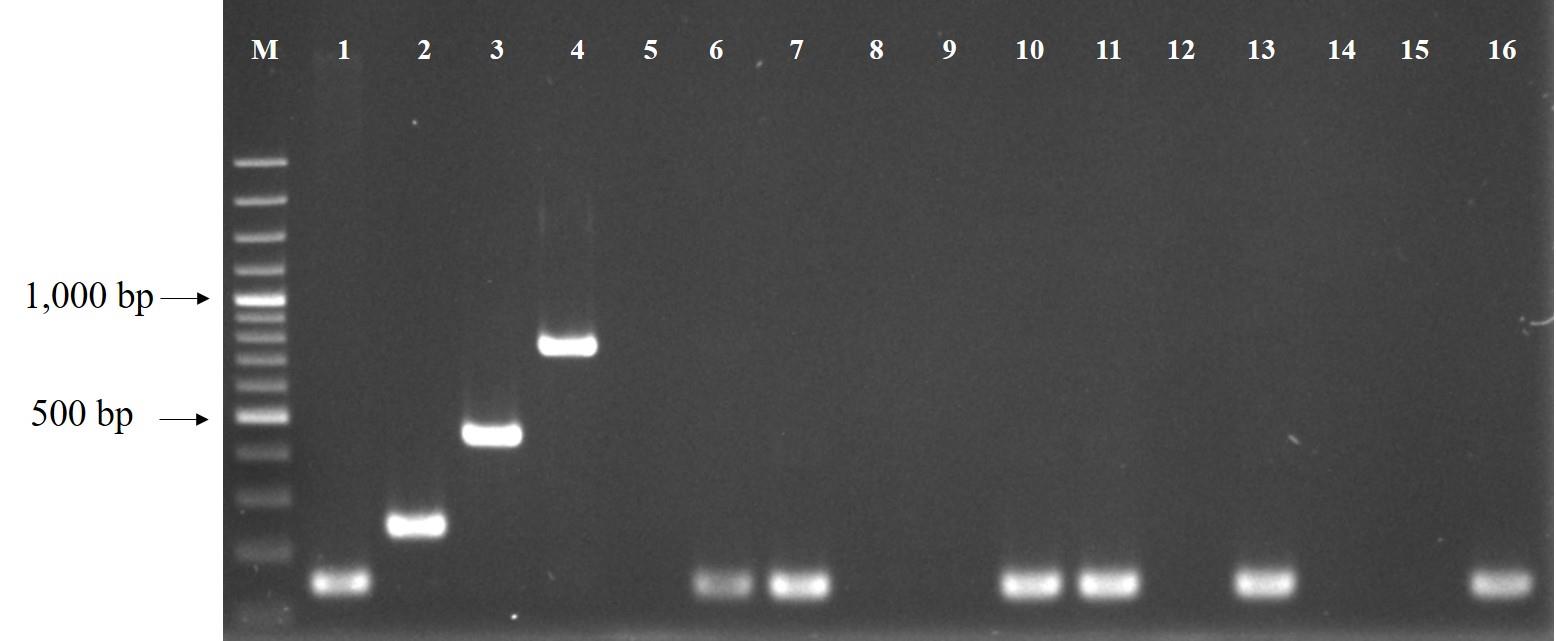Microbiological Quality and Sanitation of Food Stalls and Drinking Water Vending Machines 10.32526/ennrj/21/20230014
Main Article Content
Abstract
Consumption of food from food stalls and water from vending machines has recently increased in Sakon Nakon Province, Thailand. This study investigated the microbial quality of food stalls and the sanitation of drinking water distributed through water vending machines. Escherichia coli, Salmonella spp., Staphylococcus aureus, and Vibrio cholerae were detected using polymerase chain reaction. In total, 33 food samples were collected from food stalls and 63 drinking water samples were collected from water vending machines. The results identified E. coli in 6.06% of the food and 11.11% of the drinking water samples. Salmonella spp., S. aureus, and V. cholerae were not detected in any of the food or drinking water samples. Food sanitation assessment indicated 21 (63.64%) of the food stalls did not meet the standards for drinking water as it was not stored in clean and closed containers equipped with a tap or nozzle. Regarding the sanitation of the water vending machines, the businesses failed to inspect the physical, chemical and biological aspects of water quality and never used a simple bacterial test kit to check water quality. It is concluded that the relevant government officials should educate the vender on food safety and hygiene as well as enforcing regular monitoring of the quality of food stall and drinking water vending machines.
Article Details

This work is licensed under a Creative Commons Attribution-NonCommercial 4.0 International License.
Published articles are under the copyright of the Environment and Natural Resources Journal effective when the article is accepted for publication thus granting Environment and Natural Resources Journal all rights for the work so that both parties may be protected from the consequences of unauthorized use. Partially or totally publication of an article elsewhere is possible only after the consent from the editors.
References
Al-Talib H, Yean CY, Al-Khateeb A, Hassan H, Singh KK, Al-Jashamy K, et al. A pentaplex PCR assay for the rapid detection of methicillin resistant Staphylococcus aureus and Panton-Valentine Leucocidin. BMC Microbiology 2009; 9(1):1-8.
American Public Health Association (APHA). Standard Methods for the Examination of Water and Wastewater: Volume 22nd. Washington, DC, USA: American Public Health Association; 2012.
Bej AK, Dicesare JL, Haff L, Atlas RM. Detection of Escherichia coli and Shigella spp. in water by using the polymerase chain reaction and gene probes for uid. Applied and Environmental Microbiology 1991;57(4):1013-7.
Bereda TW, Emerie YM, Reta MA, Asfaw HS. Microbiological safety of street vended foods in Jigjiga City, Eastern Ethiopia. Ethiopian Journal of Health Sciences 2016;26(2):163-72.
Center for Disease Control (CDC). Waterborne diseases [Internet]. 2022 [cited 2022 Oct 28]. Available from: https://www.cdc. gov/healthywater/surveillance/drinking-surveillance-reports.html.
Dorothy YM, Grace SK, Moses A, Langbong B. Bacteriological quality of ready to eat foods sold on and around university of Ghana Campus. Research Journal of Microbiology 2010; 5(2):130-6.
Feng P, Weagant SD, Jinneman K. Diarrhea genic Escherichia coli [Internet]. 2022 [cited 2022 Oct 28]. Available from: https://www.fda.gov/food/laboratory-methods-food/bam-chapter-4a-diarrheagenic- escherichia-coli.
Ghosh M, Wahi S, Kumar M, Ganguli A. Prevalence of enterotoxigenic Staphylococcus aureus and Shigella spp. in some raw street vended Indian foods. International Journal of Environmental Health Research 2007;17(2):151-6.
Ministry of Public Health. Handbook of Drinking Water Vending Machines. Business Detrimental to Health, in Public Health Act 1992 and the Ministry of Public Health. Bangkok, Thailand: Ministry of Public Health; 2013 (in Thai).
Kim JS, Lee GG, Park JS, Jung YH, Kwak HS, Kim SB, et al. A novel multiplex PCR assay for rapid and simultaneous detection of five pathogenic bacteria: Escherichia coli O157:H7, Salmonella, Staphylococcus aureus, Listeria monocytogenes, and Vibrio parahaemolyticus. Journal of Food Protection 2007:70(7):1656-62.
Kong RY, Lee SK, Law TW, Law SH, Wu RS. Rapid detection of six types of bacterial pathogens in marine waters by multiplex PCR. Water Research 2002;36(11):2802-12.
Liu L, Coenye T, Burns JL, Whitby PW, Stull TL, LiPuma JJ. Ribosomal DNA-directed PCR for identification of Achromobacter (Alcaligenes) xylosoxidans recovered from sputum samples from cystic fibrosis patients. Journal of Clinical Microbiology 2002;40(4):1210-3.
Morse T, Tilley E, Chidziwisano K, Malolo R, Musaya J. Health outcomes of an integrated behaviour-centred water, sanitation, hygiene and food safety intervention: A randomised before and after trial. International Journal of Environmental Research and Public Health 2020;17(8):Article No. 2648.
Phusomya P, Yongyod R. Application of hazard analysis and critical control points concept for rural bottled drinking water production process. Urban Water Journal 2022;19(10):1060-5.
Pratum C, Khananthai N. Assessment of factors affecting drinking water quality from free water dispenser in the higher education institution. International Journal of Environmental and Science Education 2017;12:787-97.
Radhika M, Saugata M, Murali HS, Batra HV. A novel multiplex PCR for the simultaneous detection of Salmonella enterica and Shigella species. Brazilian Journal of Microbiology 2014;45: 667-76.
Seo KH, Lee JH. Understanding risk perception toward food safety in street food: The relationships among service quality, values, and repurchase intention. International Journal of Environmental Research and Public Health 2021;18(13): Article No. 6826.
Tan EY, Arifullah M, Soon JM. Identification of Escherichia coli strains from water vending machines of Kelantan, Malaysia using 16S rRNA gene sequence analysis. Exposure and Health 2016;8(2):211-6.
World Health Organization (WHO). Guidelines for Drinking Water Quality. 4th ed. Geneva, Switzerland: The World Health Report; 2017. p. 110-2.
World Health Organization (WHO). Water, Sanitation, Hygiene, and Health: A Primer on WASH and Health for Health Professionals. Geneva, Switzerland: WHO; 2019.
World Health Organization (WHO). Food safety [Internet]. 2022 [cited 2022 Jan 24]. Available from: https://www.who.int/ news-room/fact-sheets/detail/food-safety.
Yongyod R. Drinking water quality and evaluation of environmental conditions of water vending machines. Asia-Pacific Journal of Science and Technology 2018;23(1):1-5.

